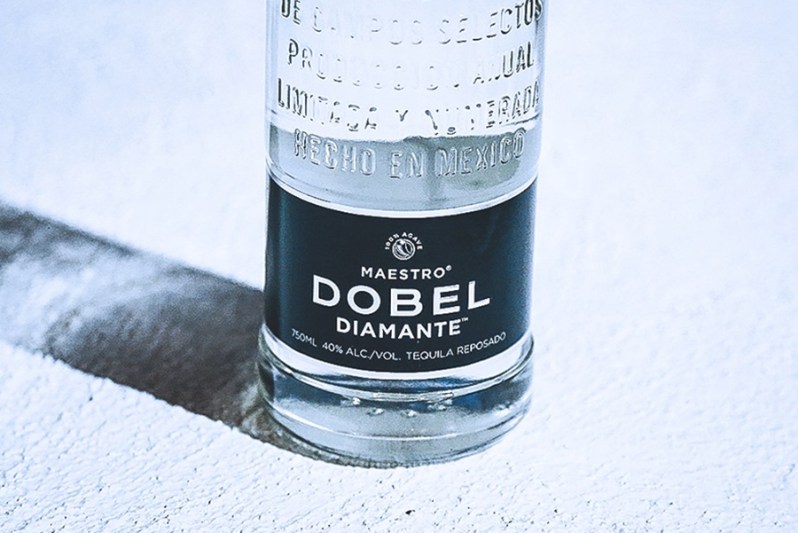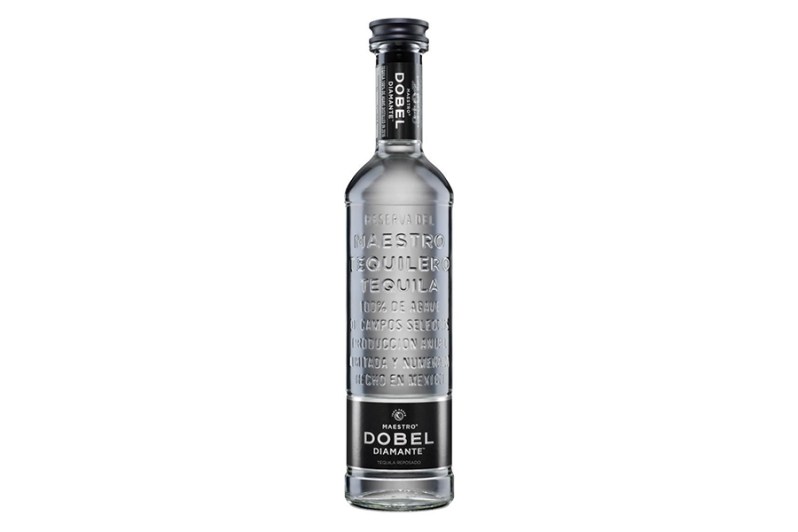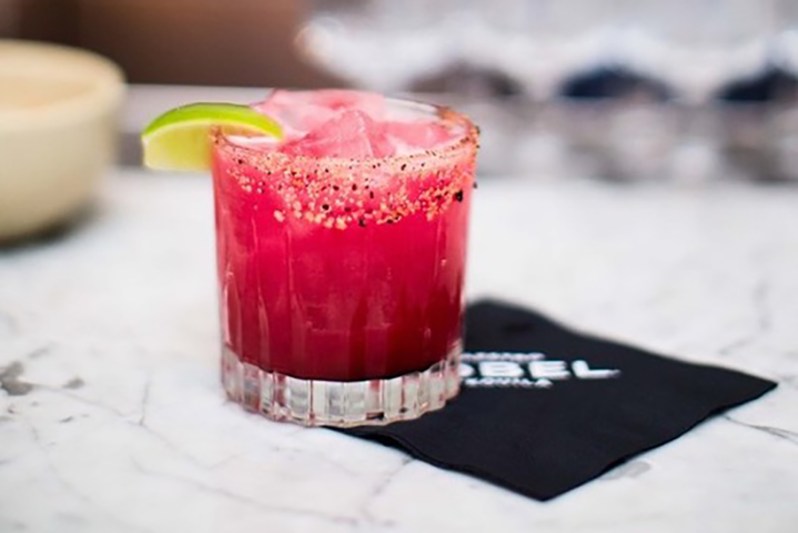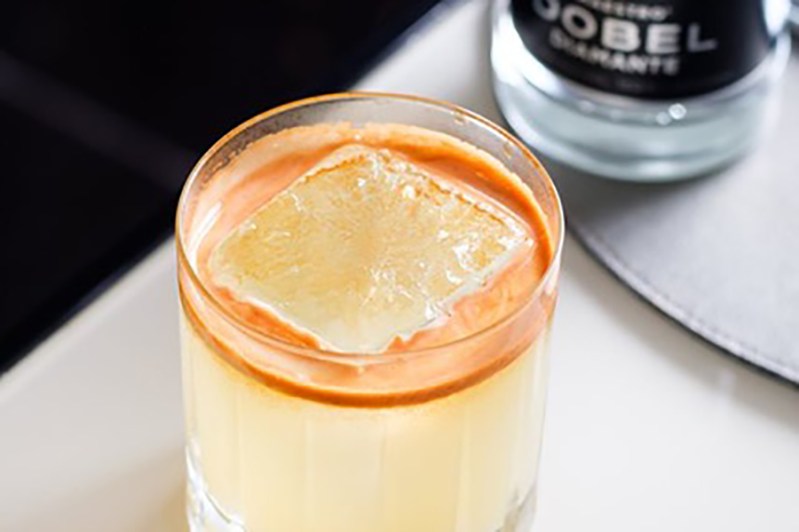
Order a tequila at the bar and you’re typically asked what kind: “blanco, reposado, añejo, or extra añejo?” Rarely (OK, never) is the response: “Hmm, all of them combined, chappy.” That would taste terrible, right? This is a question for tequila maker Maestro Dobel.
For its latest ‘Diamante’ expression, Maestro Dobel blended reposado, añejo, and extra añejo tequilas, then filtered the dark, aged concoction, yielding a clear crossbreed tequila.
There’s a word we use for combining alcohols without a mixer (not in a cocktail setting) and it’s this: madness. For instance, if a date ordered whiskey and tequila mixed, no chaser, we’d excuse ourselves and never go back (OK, we’d complete the evening and never call again). However, Maestro Dobel found a way to do it right, and it involves a process lots of other tequila brands are doing.
When aged tequila is filtered to remove its barrel-aged coloring, the resulting liquor is called a cristalino. Hornitos makes one, so does Volcan De Mi Tierra, and the benefit is you get the depth and body of an añejo with the bright and crisp notes characteristic of a young blanco. The godfather of tequila, Arturo Fuentes told The Manual that cristalinos are very popular in Mexico.
What makes Maestro Dobel Diamante unique is its combining of aged tequilas. Most cristalino tequila is made from one source; never two, and definitely not three. Diamante is literally the world’s first multi-aged clear tequila.
(Maestro Dobel was also the first to ever make a Smoked Tequila.)

Combining a one, two, and three-year-old tequila, all aged in European white oak barrels, Maestro Dobel filters the blend to remove all color. (Diamante in Spanish translates to diamond … as in crystal clear … as in cristalino.)
Details on the filtering process are kept on the down-low, but most cristalinos are filtered with charcoal. What you have at the end is a mind-bending tequila both expansive in flavor yet light and crisp.
Each tequila that goes into Diamante shares the trait of being distilled from 100% Blue Weber agave plants grown on a single estate in Jalisco, Mexico. And it wasn’t some dude off the street who thought of the idea to blend tequilas. Dobel tequila was created by an 11th-generation leader of Jose Cuervo tequilas, Juan Domingo Beckmann Legorreta. He and master distillers (aka “Maestros”) Marco Anguiano and Luis Yerenas were the founding fathers of Dobel.
The question, then, is: “How does it taste?”
Great aromatic strength comes through immediately before Maestro Dobel Diamante hits your lips. If you’re a spritzer, light beer, vodka kind of person, it may not be your thing. Upon first sip, there’s no question the heart of this spirit is deeply aged and intense. (Perfect for the cognac drinker who finds himself at a tequila bar.) A hint of fruity sweetness lightens up the palate, and given the depth and strength of this tequila it makes a superior sipper. As for cocktailing, combine with light yet bold fruit juices.
Here are two recipes from Maestro Dobel that bring Diamante to life. Because who needs the sideways glance when you ask the bartender to combine your tequilas.
Hibiscus Daisy Recipe

- 2 oz Maestro Dobel Diamante Tequila
- 1 oz watermelon juice
- .5 oz lime juice
- .5 oz hibiscus syrup
- Smoked paprika salt for rim
Method: Shake all ingredients over ice. Pour into a chilled rocks glass with a smoked paprika salt rim. Garnish with lime wedge.
Diamante Refresher Recipe

- 2 oz Maestro Dobel Diamante Tequila
- .5 oz fresh lemon juice
- .25 oz honey
- .25 oz ginger puree
- 3 dashes Angostura Bitters
Method: Shake all ingredients over ice. Pour into a chilled rocks glass. Top with


